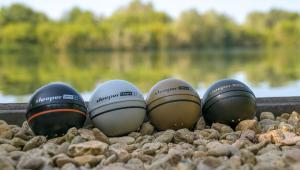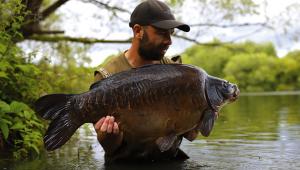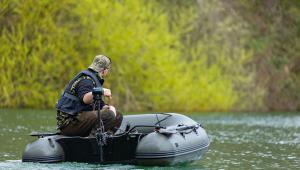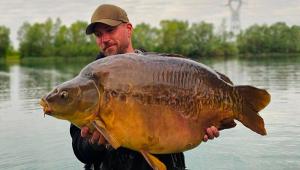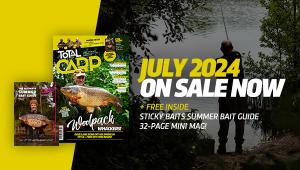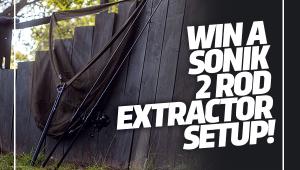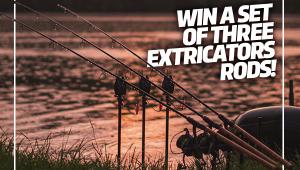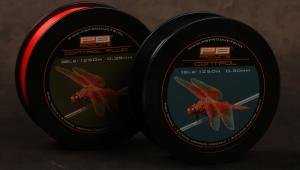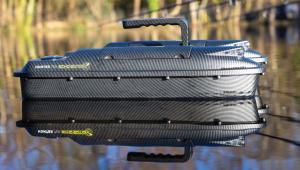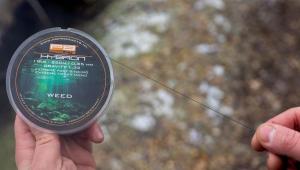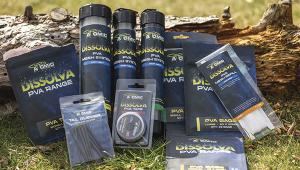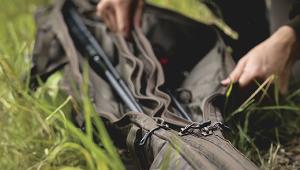Look, Learn and Catch!

As we approach the warmer months of the year, the water temperatures have drastically risen and as a result, the fish have been visiting the margins, especially the shallower areas in search of warmth, natural food and an area to bask in those lovely warm rays.
On many clear gravel pits, the margins can be the best place to find fish throughout the warm hours of daylight, with the warming water often pushing them in close to the bank. These areas are often overlooked at this time of year, but with a little thought and observation you can certainly reap the rewards when fishing the margins during the spring period.
SPOT CHOICE
This plays a big part when tracking down and trying to catch carp at close quarters and this is often dictated by observation and learning the habits of the carp.
There is no substitute to watching; in fact, most of my days are spent observing with very little time actually having a rig in the water. You have to make the effort to do laps of the lake and once you have found the fish, you need to monitor closely the areas and spots they like to spend time around and visit. You may notice that these patterns change with factors such as weather and angling pressure, but once you have noted these ‘favourable’ areas, the likelihood is they will return for a feed at some point during the course of 24 hours.
When it comes to spot choice, I try to avoid those really polished areas, especially as the season progresses and they get fished on a more regular basis. Areas when those clearings meet weed or light silt are often reliable and effective, as you can use the surrounding debris to camouflage your presentation.
RIG TYPE
My edge fishing has always revolved around short hook links and big leads; so that when a fish does pick up my hook bait it comes into contact pretty much instantly with the weight of the lead.
The links I use are also fairly stiff, generally fluorocarbon, to make it even trickier for the fish to deal with once picked up. With the combination of heavy lead and short, stiff hook link, I pay particular attention to how the rig sits on the lake bed once it has been lowered in. The last thing I want is for the hook link to be sitting kinked, which is why I always try to watch the lead and link fall through the water and settle on the bottom neatly with the rig kicked out, just to be sure.
LINE LAY
This is important when fishing at close quarters, as you want to keep your main line pinned down and out of harm’s way so as not to cause any suspicion in the approaching fish.
I generally tend to do away with any leaders and instead use blobs of heavy putty up my main line, as I feel at times, leaders can really stand out in the wrong situation.
COVER
It pays to find and fish areas that provide a degree of cover, allowing you to watch the fish feed and monitor the rig and hook bait while being out of sight.
Paying close attention to any shadows and making any sudden movements or sounds can quite literally ruin your chances at times, so bear these in mind when fish close to the bank.
Also be wary that when fishing to snags or overhanging trees to fish safely, fish welfare is paramount and you need to be able to safely hook and land those carp once hooked.
POLARISED SUNGLASSES
Polaroids are an absolute must; in fact, if I left home without them, I would have to go back.
They allow you to clearly see into the depths, which is important on bright, glary days where spotting fish without them can be particularly challenging. I opt for amber lenses, with good all- round polarisation throughout the day and into the evening.
MISSHAPEN BAITS
From the years I have been stalking, I have noticed that the fish approach and feed much more confidently on chopped baits as opposed to round boilies. In some circumstances, I have seen them eat boilie chops and completely avoid the round baits, which has basically convinced me to fish with chopped baits for all of my angling.
Not only do chopped baits encourage a better feeding response, but you get more out of your bag of boilies, with each bait creating multiple fragments for feeding. Along with these chops, I use small particle type baits such as pellets and Micromass; these keep the fish grubbing around for longer periods, despite only using a handful at a time.
Each component of the mix works effectively to add a unique dimension in order to increase attraction. The small pellets break down quickly, releasing a plume of cloudiness into the water column, while the Krill Micromass breaks down slowly, releasing distinctive fishy oils that draw fish down on to the baited spot. The mix is perfect for stalking throughout the warmer months of the year, creating a burst of attraction from the moment it is introduced!
SINGLE RODDING IT
For many of the spots I choose to fish at close quarters, one rod is all you need and can often physically get away with fishing, especially if the spots are small and tricky to get into. A shorter rod will make things significantly easier, especially when playing fish and lowering rigs into position, plus you can focus all of your attention on getting that one rod perfect, as opposed to struggling with multiple spots and rods.
The one-rod approach also means I can travel light, staying mobile and covering ground around the lake in search of feeding fish. I use a small rucksack for all of my tackle, allowing me to carry my rod, net and bait with ease.
VANTAGE POINTS
Where safe to do so, getting a better vantage of the lake bed and moving fish from a tree will significantly improve your watercraft and ability to act on signs. Trees allow you to see directly into the water column, meaning you can pick out spots and watch fish moving between areas. This is the perfect time of year to get out and catch those carp from the edge, and what’s better, it doesn’t have to be hour after hour sat behind rods – a quick evening or morning session, keeping on your toes may nick you that extra fish or two when time is limited.
- Log in or register to post comments
